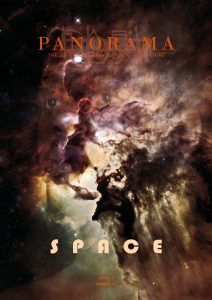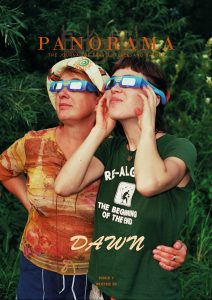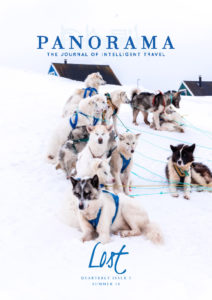This memoir documents my anxiety—from preteen to adulthood—about desertification in Southern California and the Sahel. My feelings highlight how the natural environment can create a sense of belonging or alienation. This braided creative nonfiction piece grapples with the gulf between the production of academic writing and creative writing.
*****
The outing included me, the other kids my age, and the chaperoning adults. We all departed from Los Angeles for a day trip to the mountains and I assume the invitation came from a very close family friend because I was elementary-school age and my grandmother wouldn’t have allowed me to go off with just anyone. And wow the mountains sounded like a fun place where I was sure I would see snow and since my grandmother said yes I dressed for the cold with a shirt and jeans and on top of the shirt I wore a wool jacket or an acrylic jacket that had a fake wool appearance and it even came with a faux fur collar and on my feet I wore tan cowboy boots with a pointed toe to ready myself for the snow and I know that we drove and drove east across the Southern California freeways and highways with us kids in the backseat and where we ended up I’m not sure because that was years ago so perhaps it was San Gabriel, or San Bernardino, and I definitely doubt Riverside but point being there was no snow and perhaps it was the end of fall when the Santa Ana winds are known to blow hot air because once we got to the mountains and got out the car, what I remember are my cowboy boots on the hot desert ground and the rocks and pebbles rumbling roughly under my pointed boot as I slid it over the loose dirt as the fake wool coat lay abandoned in the car and I stood outside under the beaming sun and pulled at the neck of my long sleeve shirt trying to cool down in the hot air.
*****
After arriving at the location in the mountains, perhaps my young mind said “desert” or more than likely, my young mind just said “hot.”
*****
Developers, journalists, and residents have referred to Los Angeles anecdotally as a desert despite its annual average of fifteen inches of rainfall. After reading Professor Glen M. MacDonald, I am made to rethink my erroneous perception of this city as a desert when he says, “L.A.’s higher rainfall and milder temperatures place it in the Mediterranean climate zone.” He goes on to explain that deserts receive fewer than ten inches of rain each year.
During that era when I was still an elementary-age child living in my grandmother’s home, I resided, according to MacDonald and others, in a Mediterranean zone even though I wouldn’t ponder the concept of Mediterranean until my second year in college during a humanities class where I studied the birth of civilization at the now defunct Immaculate Heart College that was tucked away in the green foliage of the Hollywood Hills. It is very unlikely that the Tongva Natives of Southern California had much interest in branding their territory Mediterranean. And I doubt the climatic concept was paramount to my grandmother when she fled the Colored Only signs of Memphis and went first to Chicago, and then L.A.
Later, MacDonald warns: “Greater Los Angeles has grown from its Mediterranean core outward and has merged with the true deserts of the east.” And cautions: “Increasing concentrations of greenhouse gases, to which Los Angeles has contributed directly, threaten to bring the true desert climate closer to the city’s core.”
*****
Being born in Los Angeles has not prepared me for the fickleness of its climate and now, decades after my fake wool episode and the drive into nonexistent snow, I also remember my mother’s tradition of driving me and my sister from L.A. to San Francisco—car rides in the 1970’s that began on Pacific Coast Highway in Santa Monica where hippies stood on the east side of the highway with their thumbs pointing north and their other hand supporting torn pieces of cardboard boxes signalling their destinations – Santa Barbara, San Francisco, Berkeley. And as the car rides progressed, my sister and I looked right and left and saw the abundance of the state’s agriculture growing amidst hills and valleys green as far as we could imagine. The Pacific coast air that smelled initially of car exhaust later smelled like ocean water then lettuce and celery and when my mom parked at rest stops, we bought snacks, so the rides tasted of strawberries and nut mixes containing almonds, peanuts, dried coconut pieces, and raisins. And later I compared those childhood trips to my own experience as an adult driving my teenage kids to San Francisco. The smells of lettuce and celery remained, and instead of fruit stands selling snacks, we witnessed the tan stretches of agricultural land the industrial farmers had left to rest during the drought and the rolling hills of brown which looked more like the out east towards Riverside than the up north of the San Joaquin Valley. Little wonder then that California – a US state with the world’s sixth largest global economy that benefits in huge measure from agriculture as its largest industry—has proclaimed that all cars sold in the state must be zero-emission by 2035.
*****
Since it is the most populous state in the U.S., I understand the need for my home state of California to take the lead in the nation on environmental issues. Human neglect causes the earth to continue breaking records such as the hottest month ever listed, largest amount of glacier melt in the Antarctic, and highest sea levels. The moment to make social, economic, and environmental changes is behind us. We can’t pretend our way through an emergency. Future survival on our planet will require sacrifices beyond simply changing the lifestyles of those in the global north while continuing to impose hardships on people in the global south.
*****
When the Sahara expands in size and the surrounding semi-arid areas are then totally dry and the ability to cultivate food is curtailed to an even greater degree leading to increased migration in search of relief despite the denials and negations of the business-minded proclaiming that life is the same as usual while the desert continues creeping and growing into areas where it never existed, so much so that the children in the tropics of the Congo can’t dig and mine fast enough to support the green revolution, maybe then, when the heat becomes unbearable and we find our future selves drinking sand from teacups and sucking sand up plastic straws and swiping sand from windshields before our daily commutes, maybe then society will honor the mother in nature or the nature in motherlands.
I surmise that as the globe continues to get warmer, deserts will increase in size. Prior to my recent flights from Los Angeles to London and then to Accra, Ghana, I not only feared flying over the vastness of the Atlantic, but I was also anxious about travelling over the expanse of the Sahara. Back home, I researched information about the Sahara to confront my fear. I learned that Luca Raineri stated as recently as 2020 that “researchers have also disputed that the Sahel is undergoing a process of desertification…The Sahelian strip south of the Sahara is reportedly much greener than it used to be 30 – 40 years ago.” And then there is the analysis by writer Amy Lifland who appears more plausible than Raineri when she says of the Sahel that “its intermittent droughts are made more devastating by the fact that they often follow wet periods.” Fickle Southern California. Fickle Sahel.
And then Lifland adds: “A general shift from a nomadic to a sedentary lifestyle all over the Sahel has also contributed to desertification, as people who have settled in one area tend to have a more deleterious effect on their environment than nomads.”
Are we Californians having a deleterious effect on our environment? No doubt. In the 1880’s to early 1900’s, Los Angeles had an electric cable car system in its downtown area that carried passengers about five miles outside the centre of the city in different directions to the neighbourhoods of Pico/Union, Echo Park, and Lincoln Heights. City officials and developers complained about the efficiency of the cable cars, and eventually car manufacturers gained the upper hand in the city.
Speaking again of Southern California, MacDonald warns that our dependence on cars is bringing the climate of the Palm Springs desert – a mere one hundred miles away from L.A. – even closer to the city’s core.
*****
And where in the vicinity of Los Angeles was I when I ran my tan cowboy boot over the rocks, pebbles, and sand? And why was a little Black girl with her African hair pressed and then divided into two ponytails and bangs wearing the shoes of a cowboy?
*****
Amy Lifland, “Starvation in the Sahel: Food Security in Africa,” Harvard International Review, (Summer 2012): 6-7
Glen M. MacDonald, “The Myth of a Desert Metropolis: Los Angeles was not built in a desert, but are we making it one?” Boom: A Journal of California, (Fall 2013): 86-94
Luca Raineri, “Sahel Climate Conflicts: When (fighting) climate change fuels terrorism,” European Union Institute for Security Studies (Nov 1, 2020): 1-8.











